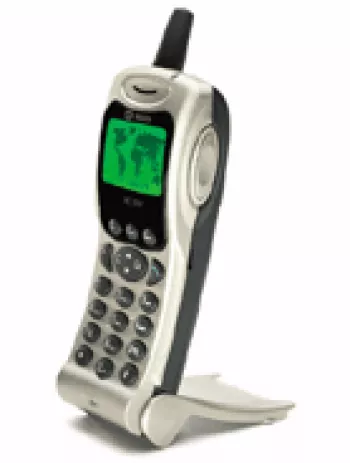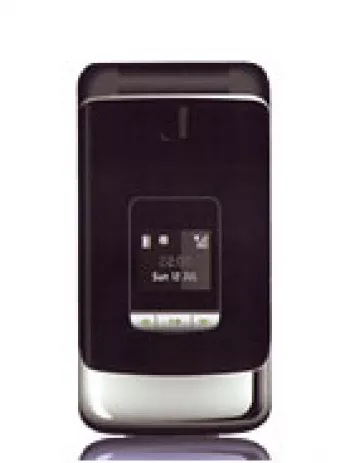
Overview of the Sagem Roland Garros Mobile Phone
The Sagem Roland Garros is a feature phone that was announced in February 2008 and released in April of the same year. This compact and lightweight device presents a variety of functionalities focused on basic mobile communication and media features, typical of that era's technology. With iterative developments in both design and software, the Roland Garros stood as a practical solution for traditional mobile users seeking reliability over complexity.
Design and Build
The Sagem Roland Garros boasts a sleek design with dimensions of 106.9 x 46.3 x 10.9 mm and weighs a modest 81 grams. Its black color gives it a classic appeal, while the compactness ensures it fits comfortably in the hand. The build is traditional, aligning with the era’s feature phones where functionality prioritized over aesthetic innovation.
Display
Equipped with a TFT display capable of showing 65K colors, the phone’s screen resolution stands at 120 x 160 pixels with a 4:3 aspect ratio. Although it may not compete with modern displays, it was designed to provide clarity for its time, suitable for simple image viewing and text reading.
Camera Capabilities
The Sagem Roland Garros features a single 1.3 MP rear camera. While it lacks video recording capabilities, the camera was sufficient for capturing basic photos adequate for MMS sharing. The absence of a selfie camera reflects the design priorities of the era focusing more on text communication.
Network and Connectivity
Supporting GSM technology, this device operates on 2G bands (GSM 900/1800/1900), and includes GPRS for basic internet services. Its connectivity options are modest with Bluetooth capability for local sharing and a proprietary USB port for charging and data transfer. Unfortunately, the absence of modern connectivity features like WLAN or GPS positioning limits its functionality to more traditional uses.
Memory and Storage
The device provides a 13MB internal storage, which is extendable through a dedicated microSD slot. This expansion potential allowed users additional space for multimedia files and applications, albeit in quite a limited range compared to contemporary standards. Basic phonebook and call record functionalities are embedded, capable of storing dialed, received, and missed calls (20 each).
Sound and Alerts
Auditory alerts include vibration and polyphonic ringtones, with a loudspeaker integrated for hands-free functionality. However, the absence of a 3.5mm audio jack restricts personal sound experiences requiring users to rely on the loudspeaker for media playback.
Battery Life
Powered by a removable Li-Ion battery, the Sagem Roland Garros offers up to 220 hours of stand-by time and up to 3 hours of talk time. These metrics, suitable for less frequent phone users, reflect the economical energy usage synonymous with feature phones.
Software and Features
Running on a proprietary operating system characteristic of feature phones, the Sagem Roland Garros provides basic messaging services such as SMS and MMS. A WAP 2.0/xHTML browser comes pre-installed for fundamental web browsing, alongside Java MIDP 2.0 support for light applications and games, catering to casual users uninterested in more sophisticated smartphone capabilities.
Market and Availability
Released in the mid-2000s, the Sagem Roland Garros targeted consumers looking for a no-frills device. Although it has been discontinued, its legacy persists as a reminder of simpler times in mobile technology history, emphasizing straightforward communication over complexity and the multifaceted capabilities expected of today’s devices.
Conclusion
The Sagem Roland Garros stands as a hallmark of an era focused on essential communication, representing a clear dedication to practicality and user-friendly design. While it may not hold up against the technological marvels of today, it served its purpose sufficiently and efficiently for those seeking minimalism in their mobile technology experience.
Key Features of Sagem Roland Garros
- GSM Technology with 2G bands: GSM 900 / 1800 / 1900
- Compact and lightweight design: 106.9 x 46.3 x 10.9 mm, 81 g
- TFT display with 65K colors and resolution of 120 x 160 pixels
- Expandable storage via microSD card slot
- 1.3 MP main camera
- Bluetooth connectivity
- Supports SMS and MMS messaging
- WAP 2.0/xHTML browser
- Java MIDP 2.0 support
- Removable Li-Ion battery with up to 220 hours standby time
Disadvantages of Sagem Roland Garros
- Lacks 3G and 4G technology; only supports GSM networks.
- No EDGE support, limiting faster data connectivity options.
- Discontinued status, meaning it may not be supported with updates or repairs.
- Display size not mentioned, potentially indicating a smaller or unspecified screen size.
- Low display resolution with only 120 x 160 pixels.
- Limited internal memory of only 13MB, potentially necessitating frequent external memory use.
- Main camera is only 1.3 MP, lacking video recording capabilities.
- No selfie camera available.
- No 3.5mm audio jack, restricting standard headphone use without an adapter.
- No WLAN functionality, limiting internet access to mobile data only.
- No built-in positioning (e.g., GPS) features available.
- No radio and proprietary USB connection reduces compatibility and convenience.
- Battery talk time limited to up to 3 hours.
- Available in only a single color: Black.



View Also
More Phones
All Rights Reserved +13916 Phones © Mobilawy 2025
























